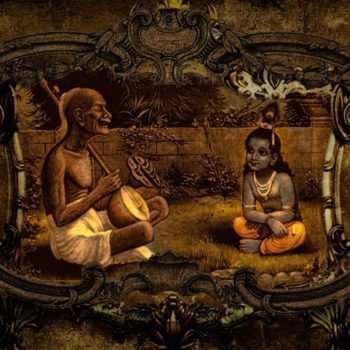The origins of anekāntavāda can be traced back to the teachings of Mahāvīra (599–527 BCE), the 24th Jain Tīrthankara. The Jain doctrine of anekāntavāda, also known as anekāntatva, states that truth and reality is complex and always has multiple aspects. Reality can be experienced, but it is not possible to totally express it with language. Human attempts to communicate is naya, or “partial expression of the truth”. Language is not Truth, but a means and attempt to express truth. From truth, according to Māhavira, language returns and not the other way around. One can experience the truth of a taste, but cannot fully express that taste through language. Any attempts to express the experience is syāt, or valid “in some respect” but it still remains a “perhaps, just one perspective, incomplete”. In the same way, spiritual truths are complex, they have multiple aspects, language cannot express their plurality, yet through effort and appropriate karma they can be experienced.
The word anekāntavāda is a compound of two Sanskrit words: anekānta and vāda. The word anekānta itself is composed of three root words, “an” (not), “eka” (one) and “anta” (end, side), together it connotes “not one ended, sided”, “many-sidedness”, or “manifoldness”. The word vāda means “doctrine, way, speak, thesis”. The term anekāntavāda is translated by scholars as the doctrine of “many-sidedness”, “non-onesidedness”, or “many pointedness”.

The term anekāntavāda is not found in early texts considered canonical by Svetambara tradition of Jainism. However, traces of the doctrines are found in comments of Mahavira in these Svetambara texts, where he states that the finite and infinite depends on one’s perspective. yThe word anekantavada was coined by Acharya Siddhasen Divakar to signify the teaching of Mahavira that truth can be expressed in infinite ways. The earliest comprehensive teachings of anekāntavāda doctrine is found in the Tattvarthasutra by Acharya Umaswami, and is considered to be authoritative by all Jain sects. In the Digambara tradition texts.
The Jain texts explain the anekāntvāda concept using the parable of blind men and elephant, in a manner similar to those found in both Buddhist and Hindu texts about limits of perception and the importance of complete context. The parable has several Indian variations, but broadly goes as follows:
A group of blind men heard that a strange animal, called an elephant, had been brought to the town, but none of them were aware of its shape and form.
Out of curiosity, they said: “We must inspect and know it by touch, of which we are capable”. So, they sought it out, and when they found it they groped about it. In the case of the first person, whose hand landed on the trunk, said “This being is like a thick snake”. For another one whose hand reached its ear, it seemed like a kind of fan. As for another person, whose hand was upon its leg, said, the elephant is a pillar like a tree-trunk. The blind man who placed his hand upon its side said, “elephant is a wall”. Another who felt its tail, described it as a rope. The last felt its tusk, stating the elephant is that which is hard, smooth and like a spear.
This parable is called Andha-gaja-nyaya maxim. While the same parable is found in Buddhist and Hindu texts to emphasize the need to be watchful for partial viewpoints of a complex reality, the Jain text apply it to all subjects.
SOURCE: WIKIPEDIA
Photo: Vardhamāna Mahavira murti from Rajasthan, Karoli.


